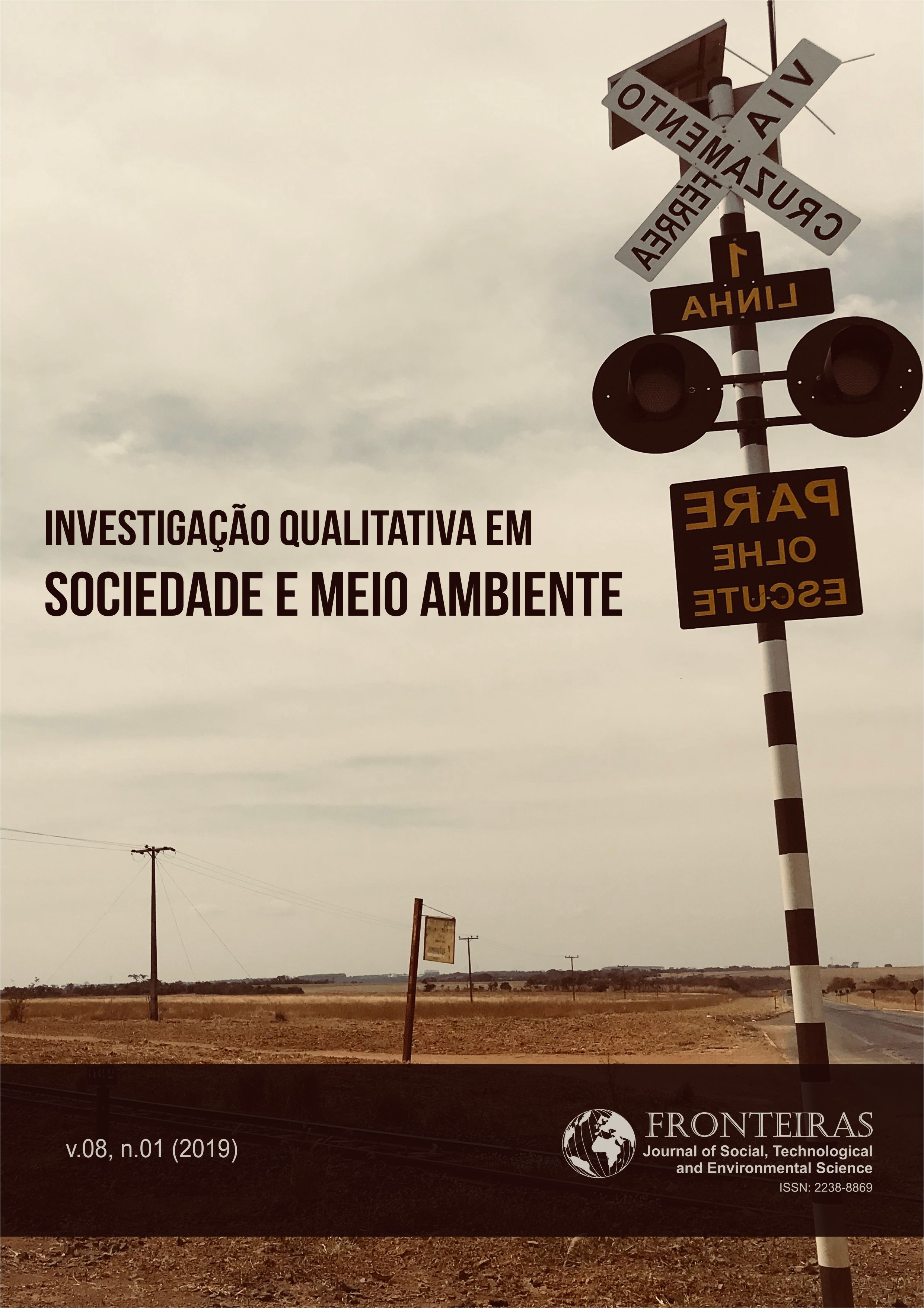Analysis of Average Temperatures And Trends In Brazil: Applying CUSUM Graphic from 2000 to 2014
applying CUSUM graphic from 2000 to 2014
DOI:
https://doi.org/10.21664/2238-8869.2019v8i1.p169-184Keywords:
Cumulative Sum Chart, Air Temperature, Temperature Trends, Temperature ModelingAbstract
In recent decades the temperature trends are being confirmed earlier. To determine the temperature changes in Brazil, analysis of annual trends and seasons was carried out based on daily data from 187 weather stations, covering the period from 2000 to 2014. Trends were confirmed using the Cumulative Sum Chart, a method that notices the changes in series faster than others. The modeling of temperature was obtained by Multiple Regression and using Cluster Analysis, and through this it was possible to group weather stations. The observed trends confirmed oscillations in cooling, heating and, in some cases, cooling followed by heating. These main trends presented during the study period were from -15 to 0 in latitude. The region with the highest confirmation of inversions in temperature was the North, then Northeast. Heights below 500 meters presented higher trends. Regarding the seasons, autumn contributed significantly to the trends.
References
Bajat B, Blagojevic D, Kilibarda M, Lukovic J, Tosic I 2015. Spatial analysis of the temperature trends in serbia during the period 1961-2010. Theor Appl Climatol, 121(1):289-301.
Balling-JR RC, Michaels PM, Knappenberger P 1998. Analysis of winter and summer warming rates in gridded temperature time series. Clim Res, 9(3):175-181.
Breaker LC 2007. A closer look at regime shifts based on coastal observations along the eastern boundary of the north pacific. Cont Shelf Res, 27(17):2250-2277.
Brunet M, Jones PD, Sigró J, Saladié O, Aguilar E, Moberg A, Della-Marta, PM, Lister D, Walther A, Lopez D 2007. Temporal and spatial temperature variability and change over spain during 1850-2005. J Geophys Res Atmos, 112(D12).
Brunet M, Sigró J, Saladie O, Aguilar E, Jones P, Moberg A, Walther A, López D 2005. Spatial patterns of long-term spanish temperature change. Geophys Res Abstr, (7): 04007.
Devore J L 2015. Probability and Statistics for Engineering and the Sciences. Cengage Learning, Boston, 9 edition.
Efron B, Tibshirani R 1991. Statistical data analysis in the computer age. Science, 253:390-395.
Fischer T, Gemmer M, Liu L, Su B 2012. Change-points in climate extremes in the zhujiang river basin, south china, 1961-2007. Clim Chang, 110(3):783-799.
Gomez JD, Etchevers J, Monterroso A, Gay C, Campo J, Martinez M 2008. Spatial estimation of mean temperature and precipitation in areas of scarce meteorological information. Atmosfera, 21:35-56.
Gurevech G, Hadad Y, Ofir A, Ohayon B 2011. Statistical analysis of temperature changes in israel: an application of change point detection and estimation techniques. Global Nest Journal, 13(03):215-228.
IBGE 2016. Topographic mapping. Brazilian Institute of Geography and Statistics.
Inmet 2015a. Ministry of agriculture, livestock and supply. Brazilian Institute of Meteorology.
Inmet 2015b. Note technical: network stations. Brazilian Institute of Meteorology.
IPCC 2007. Climate change 2007: the physical science basis: summary for policymakers. IPCC. Groupe d'experts intergouvernemental sur l'évolution du climat. Working Group I and Alley, Richard.
IPCC 2014. Climate change 2014: synthesis Report. IPCC. Contribution of working groups I, II and III to the fifth assessment report of the intergovernmental panel on climate change.
Kamruzzaman M, Beecham S, Metcalfe AV 2011. Non-stationarity in rainfall and temperature in the murray darling basin. Hydrol Process, 25(10):1659-1675.
Kerr RA 1992. Unmasking a shifty climate system. Science, 255(5051):1508-1510.
Klein-Tank AMG, Konnen GP 2003. Trends in indices of daily temperature and precipitation extremes in Europe, 1946-99. J Climate, 16(22):3665-3680.
Klein-Tank AMG, Wijngaard JB, Knnen GP 2002. Daily dataset of 20th-century surface air temperature and precipitation series for the european climate assessment. Int J Climatol, 22(12):1441-1453.
Lorentzen T 2015. A statistical analysis of sea temperature data. Theor Appl Climatol, 119(3):585-610.
Montgomery DC 2012. Introduction to statistical quality control. Wiley, New York, 7 edition.
Montgomery DC, Jennings CL, Kulahci M 2015. Introduction to time series analysis and forecasting. John Wiley & Sons, New Jersey, 2 edition.
Montgomery DC, Runger GC 2010. Applied statistics and probability for engineers. John Wiley & Sons.
Philandras CM, Nastos PT, Repapis C 2008. Air temperature variability and trends over Greece. Global Nest J, 10(2):273-285.
Roberts SW 1966. A comparison of some control chart procedures. Technometrics, 8(3):411-430.
Toreti A, Desiato F 2008. Temperature trend over italy from 1961 to 2004. Theor Appl Climatol, 91(1):51-58.
Torgovitski L 2015. A darling-erdos-type cusum-procedure for functional data. Metrika, 78(1):1-27.
Unkasevic M, Vujovic D, Tosic I 2005. Trends in extreme summer temperatures at Belgrade. Theor Appl Climatol, 82(3):199-205.
Vincent LA, Peterson TC, Barros VR 2005. Observed trends in indices of daily temperature extremes in South America 1960-2000. J Climate, 18(23):5011-5023.
Walpole RE, Myers R H, Myers SL, Ye K 2011. Probability & statistics for engineers & scientists. Pearson, United States of America, 9 edition.
Wang H, Chen Y, Li W 2015. Characteristics in streamflow and extremes in the Tarim river, china: trends, distribution and climate linkage. Int J Climatol, 35(5):761-776.
Zhang X, Shao X, Hayhoe K, Wuebbles DJ 2011. Testing the structural stability of temporally dependent functional observations and application to climate projections. Electron J Statist, 5:1765-1796.
Downloads
Published
How to Cite
Issue
Section
License
This journal offers immediate free access to its content, following the principle that providing free scientific knowledge to the public, we provides greater global democratization of knowledge.
As of the publication in the journal the authors have copyright and publication rights of their articles without restrictions.
The Revista Fronteiras: Journal of Social, Technological and Environmental Science follows the legal precepts of the Creative Commons - Attribution-NonCommercial-ShareAlike 4.0 International. 


